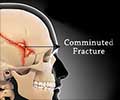Researchers at John Hopkins University revealed that a bone tissue grown from human embryonic stem cells (hESCs) has successfully been used to heal large skull defects in mice.
The researchers manoeuvred the mesenchymal precursor cells into bone regeneration by using “scaffolds,” tiny, three-dimensional platforms made from biomaterials.The research led by Nathaniel S. Hwang and Jennifer Elisseeff, demonstrated that by changing the scaffold materials, they could shift mesenchymal cells into either intramembraneous, which makes skull, jaw, and clavicle bone or endochondral, which builds the “long” bones and involves initial formation of cartilage, which is then transformed into bone by mineralization.
“Biomaterial scaffolds provide a three-dimensional framework on which cells can proliferate and differentiate and form functional tissues,” Hwang said.
Researchers suggest that conventional hESC differentiation procedure rely on growth factors, co-culture, or genetic manipulation. The scaffolds offer a much more efficient method.
Hwang and colleagues proved the principle by seeding hESC-derived mesenchymal cells onto composite scaffolds and used the resulting intramembraneous bone cells to successfully heal large skull defects in mice.
The Hopkins researchers believe that this is the first study to demonstrate a potential application of hESC-derived mesenchymal cells in a tissue regeneration application.
Advertisement
Source-ANI
LIN/P











